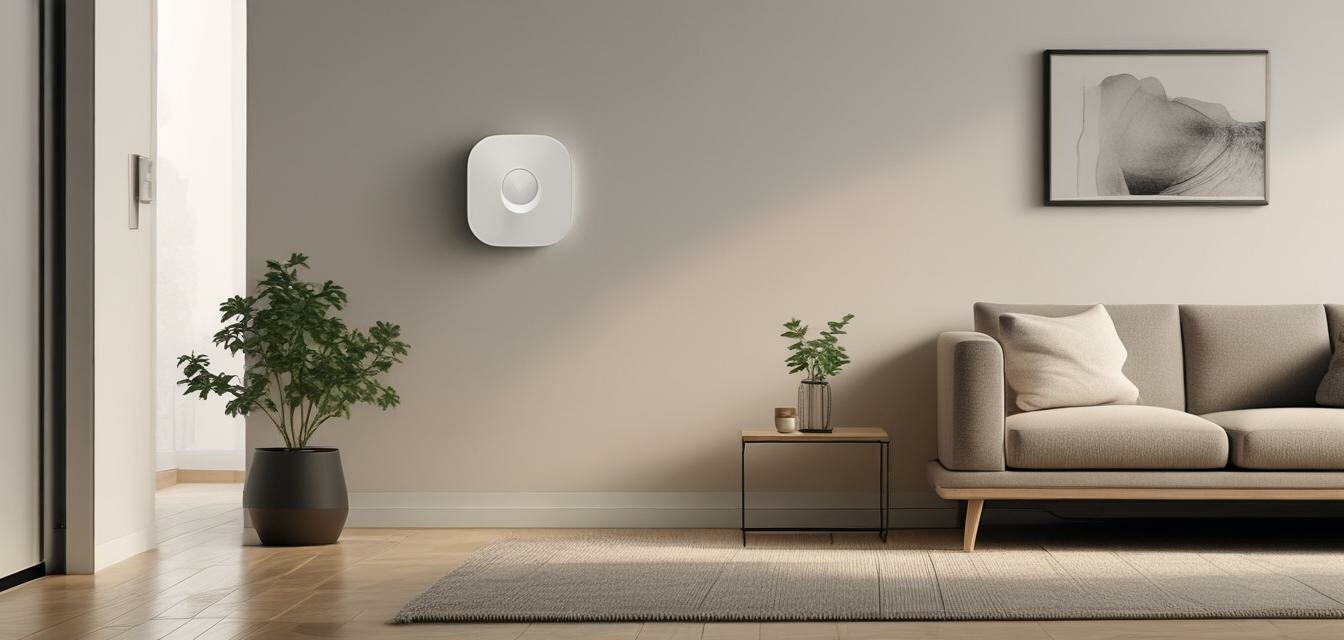
Choosing Smart Motion Sensors for Your Home
Key Takeaways
- Understand the different types of motion sensors available.
- Consider factors such as range, detection style, and compatibility.
- Look for features like smart integration and automation settings.
- Pay attention to the placement of sensors for optimal performance.
- Evaluate battery life and ease of installation.
Smart motion sensors are essential components of modern home security systems. They not only help to deter intruders but can also automate lighting or notifications in your home. However, with various options available, choosing the right one can be a daunting task. In this guide, we will explore crucial factors to consider when selecting smart motion sensors for different areas of your home.
Types of motion sensors
Here are the most common types of motion sensors you can find:
| Type | Description |
|---|---|
| PIR (Passive Infrared) | Detects infrared radiation from moving objects, mainly humans and animals. |
| Microwave | Uses microwave pulses to detect motion; it can cover larger areas than PIR sensors. |
| Dual Technology | Combines PIR and microwave technologies for enhanced accuracy and reduced false alarms. |
| Photoelectric | Detects motion based on changes in light; ideal for outdoor use. |
Factors to consider when choosing smart motion sensors
1. Detection range
Consider the area you'd like to monitor. Different sensors have varying detection ranges. Ensure that the chosen sensor covers the desired area.
2. Detection style
Think about how you want the sensor to detect motion. Passive sensors only react to movement, while active sensors may also send alerts or notifications.
3. Smart home integration
Choose sensors that easily integrate with your existing smart home system, ensuring seamless communication between devices. This can enhance security and convenience.
4. Placement of sensors
Correct placement of motion sensors is crucial. Make sure sensors are installed at recommended heights and angles, avoiding obstacles like furniture or walls. Common placements include:
- Near entrances
- Hallways
- Living rooms
- Outdoor areas
5. Battery life and power source
Check the battery life of the sensor. Wired models tend to be more reliable, but as battery-operated units become more efficient, they can also work well. Evaluate your preference and zone accordingly.
Feature comparison table
| Feature | PIR Sensors | Microwave Sensors | Dual Technology |
|---|---|---|---|
| Detection Method | Infrared | Microwave Pulses | Infrared & Microwave |
| False Alarms | More Common | Less Common | Least Common |
| Installation Ease | Easy | Moderate | Moderate |
| Cost | Low | Higher | Moderate |
Key brands and models to explore
When selecting smart motion sensors, it’s wise to consider popular brands recognized for their reliability and innovation. Look into their product lines and focus on models that suit your specific needs. For more information, check out our motion sensor product category.
Installation tips
Beginners Section
- Read the installation manual thoroughly before setting up.
- Use a level to ensure the sensor is mounted correctly.
- Test the sensor after installation to confirm proper functionality.
- Consider using a backup power source for wireless sensors.
Final thoughts
Choosing the right smart motion sensor for your home is essential for maximizing security and automation. By understanding the types available and evaluating factors such as detection range, placement, and features, you can make the best choice for your needs. Be sure to explore more resources in our Buying Guides section to help streamline your purchase.
Pros
- Enhances home security
- Automation features improve convenience
- Can deter intruders
- Integration with other smart devices
Cons
- Possible false alarms
- Requires careful placement
- Ongoing maintenance for battery units
